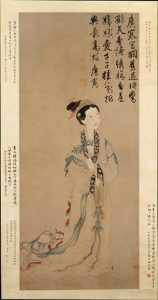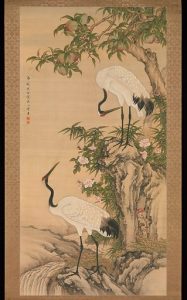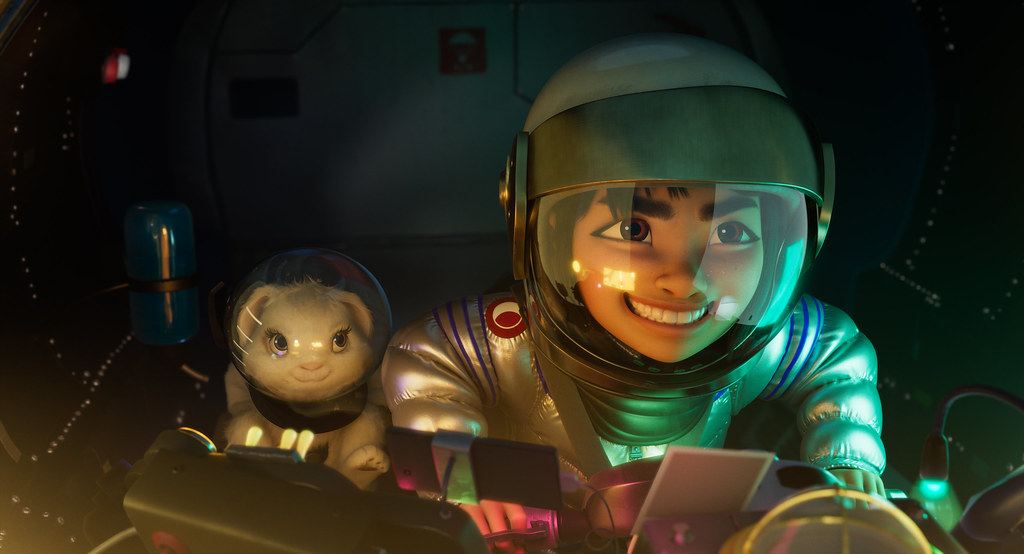How often have we found ourselves sitting in a cinema or at home on a couch, watching a popular film that a friend or family member suggested, and it covers a geographical area and culture we’re not quite familiar with? Most people are exposed to various regions and cultures through the consumption of media, with film being the most prominent. We are briefly exposed to certain aspects of the culture through media, being influenced by the story and most importantly, its main cast. But how frequently do we actually go the extra mile to analyze the information or piece together more of the culture, rather than solely relying on the characters to tell us how people of that culture behave, speak, and act? The answer is an extremely small amount of time compared to what we’d like to believe, emphasizing why it’s that much more important to represent cultures in media well. However, it is extremely difficult to completely encapsulate any one culture in a movie, as each is vast and composed of many different aspects such as region, age (new vs. old history), language, etc. Despite its difficulty, it is possible to capture good cultural representation in film by focusing on a handful of those aspects and fleshing them out using the essentials of film: humanization, characters, writing, and most importantly a compelling story. One way to better understand this concept is examine a film that encapsulates a culture correctly. Let’s focus on Chinese culture and a film that succeeds in representing this culture well.

Over the Moon is a film released by Netflix in a collaborative effort with the Chinese company PearlStudio. It revolves around the Chinese Mid-Autumn festival and the goddess celebrated during this time: Chang’e, “the moon goddess in Chinese mythology who represents agricultural prosperity, romance, and grace.” 1 Upon looking at the promotional art and the synopsis, it’s obvious that the film is tinged with Chinese culture. The film is centered around the legend of Chang’e, and includes various symbolic animals: the crane, frog, and rabbit, and other subtle objects or layouts that many who are familiar with, or part of the culture can recognize. Its normal to feel something when identifying happenings in the film and relating them back to your own culture. Jon Chu describes these instances; “seeing us on the screen has a power to it and the only way I can describe it is pride.” 2 Even the simple kitchen layout having dried spices on the wall, various bottles huddled together on a shelf with a large jug of soy sauce, and a dated pan scale. Little details like these offer the audience a taste of “traditional and modern experiences out of which contemporary Chinese people have grown.” 3 But most importantly resonate with those who grew up as part of this culture. These small details do so much in storytelling to those who are familiar with the culture by giving the cultured audience something to relate to and those who aren’t familiar with it, subtle exposure to another culture. But this is just one part of the storytelling, an accent to the larger part; the plot and message, which carries and fleshes out the film.

This storytelling is complimented by humanizing the main character, as we, the audience are introduced to Fei Fei, a young girl whose family owns and takes pride in a mooncake stall. She is enamored with her mother and the story of Chang’e that she tells her. It is a tale of a goddess who lives on the moon waiting for the return of her lover, Hou Yi, for eternity. However, this beloved legend turns into an inseparable memory when her mother becomes very ill and as a result, eventually passes away. Fei Fei is now left all alone with her father. The film explains her experience in a silent scene where Fei Fei and her father solemnly place a white lotus into the river, the place where they would often sit and overlook as a family. “The language of displacement privileges feeling, especially loss, over other faculties, and the accouterment of dying’s mise en scène over examination itself.” 4 It exemplifies her new struggle to overcome the recent loss of her mother and her difficulty adjusting to a new life and family. Over the Moon uses this common film trope of a loss of a family member to engage the audience and emphasize with Fei Fei’s struggles. This gives Fei Fei and the audience a reason to dive deeper into the story of Chang’e.
Fei Fei’s frustration, confusion, and grief over moving on are shadowed by a crane who visits her until she is ready to move on. This animal in Chinese culture symbolizes longevity and represents Fei Fei’s deceased mother’s soul, showing that even after death her mother is watching over her. The struggle of overcoming the loss of a loved one is something that most, if not all of us, can relate to. This struggle is represented by the way Fei Fei tightly clutches at the fragments of her mother’s memory, Bungee the rabbit given to her by her mother and the tale of Chang’e told to her long ago. She remains terrified to let go, believing that if these ever disappear so will her mother. Years later, Fei Fei’s life turns upside down when her father begins to move on and frequently invite a woman, Ms. Zhong, and her Chin, to their house. Unsurprisingly, he later announces his plans to get married. Fei Fei, now having to deal with the possibility of navigating a new family again and still struggling with moving on from the past devises a plan to preserve her memories. If she is able to find Chang’e and prove her existence perhaps it will change her father’s mind, and everything will return to normal. Her determination and resolve fuel her drive to building a rocket in hopes of flying to the moon. Everything seems to be going well when Fei Fei completes the rocket and prepares to take off with Bungee. However, her excitement at lift-off is quickly overwritten by frustration when she realizes that Chin, her new brother had snuck onto her rocket. This distraction and extra weight on the rocket cause it to launch improperly but still manages to get them to the moon. This scene tells the audience an important factor in journeys through grief. There are several moments that won’t go our way, for Fei Fei it was the rocket failing, but there will always be someone that is willing to accompany and aid us in our journey, in this instance Chin.

When the two make it to the moon, known as Lunaria, Chang’e presents them with a task to find a vaguely described memento which she plans to use to see Hou Yi, for the last time. The siblings prepare to search but Fei Fei, still bitter from Chin coming along, decides to search on her own. During the separate searching scenes, several more details can be identified. They are scattered in her journey and do a great job at subtly referring back to Chinese culture. Some examples are when Bungee meets the moon rabbit and observes and aids in making a medicine that refers back to the immortality elixir 5, that Chang’e took when still a mortal. The significance of the jade pendant found in the mooncake, with jade being a well-known precious stone associated with the Chinese culture and its various meanings such as luck, virtue, and heaven and earth. Finally, the physical appearance of Chang’e when she sees Hou Yi, her garments resembling that of the Tang Dynasy. After several obstacles and trials, Fei Fei realizes she needs to work together with Chin and the various creatures on the moon to find the memento. When they finally complete the tasks Chang’e sets, Chang’e is able to see Hou Yi for the last time but is quickly faced with the same problem as Fei Fei when he disappears; having to move on. In this scene, Chang’e, who is confused on how to deal with her grief, locks herself away with a barrier. Fei Fei being the only one that is able to get through it, goes to the mourning Chang’e. It is here where they indulge in a heartfelt conversation about their losses, each consoling each other, and realizing that they’re not alone in this journey of battling loneliness and grief. The two are able to comfort each other and find the strength to continue their lives with the memory of their loved ones.

This film is believable and becomes something that resonates with the audience solely because of the humanization of Fei Fei and her realistic struggle. In a single scene where Fei Fei is going back to earth, she holds up a picture she took with Chang’e. The photo begins to burn up, but Fei Fei smiles, as she realizes she no longer needs to grasp to the legend to keep her mother’s memory. This is the point where she is truly able to move on. When she returns to earth, she is able to accept her new family and is visited by the crane for the last time before it goes and joins a flock of other cranes. A heartwarming way to show how both Fei Fei and her mother’s soul have moved on peacefully. A scene in which both someone who is and isn’t familiar with the culture can understand and connect to. Fei Fei embodies great humanization as a character because the audience can visually see her struggle, and regardless of connection to the culture can still be invested in her character and relate to her hardships.
Representation is very important in films but what is more important is that it’s effective through its characters and storytelling. The audience can understand the culture better when they are able to see commonalities between the character’s lives and their own. The settings of each scene and simple cultural details work hand and hand with the cast and story to create something that the audience will remember. The most important quality of the film is that despite its revolving around a culture most aren’t familiar with, it can be enjoyed and understood by everyone.
- Kumar Samir, Chang’e (deity). (Salem Press Encyclopedia, 2022). ↵
- Jon M. Chu. “The pride and power of representation in film” TED video, 14:21. https://The pride and power of representation in film | Jon M. Chu ↵
- Qian Suoqio, “Chinese culture: its humanity and modernity,” World Scientific Publishing Europe Ltd. 2021. ↵
- Michele Aaron, Death and the moving image: ideology, iconography, and I (Edinburgh University Press, 2014) 101. ↵
- Kumar Samir, Chang’e (deity). (Salem Press Encyclopedia, 2022). ↵




9 comments
Sarah Guerrero
Wow, Theresa! You wrote beautifully. I’m now compelled to watch Over the Moon. I completely agree with what you said about representation and how it can sometimes be difficult for filmmakers to bring every detail of a specific culture into a film. But it is also as you said, it is about finding a way to address what is relevant to the story in a tactful way that resonates with the individuals of that specific culture, but is also enjoyable for those that don’t know too much about another culture. I’m truly moved by what you wrote and wish you luck!
Aztlan Alvarado
This is such a well written article, allowing for the reader who may not have seen the movie to create various different scenes and images in their head in order to be able to understand the main point of the article. I am now very intrigued to not only watch the movie but also learn more about Chinese culture. Great job!
Mariana Mata
What a beautiful article! The emotional story of grief is always a hard one to understand, but I am thankful that film exists in order to captivate such a devastating yet beautiful story! I also like how many film producers introduce different traditions on how certain people deal with grief, giving us a glimpse to how each human being goes on along in the journey of grief. I always loved Chinese folklore because it always find beauty in the suffering. What a lovely story!
Jose Luis Gamez, III
Interesting article based on the Netflix series “Over the Moon”. Even though I have not watched this series, this article narrates the grieving process of a daughter and father. Congrats on your nomination!
Morgan Kuchta
This is such a wonderful article! I really enjoyed your descriptions of the scenes and the context you gave to things that may not be readily recognized. I’m very happy to see cultural connections and emotional depth being included in more media. My little cousins loved this movie, and thanks to your article, I’m inspired to watch it, as well. Congratulations on your nomination, it is incredibly well-deserved!
Jocelyn Elias
Congratulations on your article and your nomination. I truly appreciate your composition because it does walk us through the process of grief. Unfortunately, grief is not something that we are prepared for even if people were to tell us with prior time it’s hard to accept grief. Not only that, it’s hard to find an honorable way to honor a person in memory, and this story and how you explained it made me feel that you could hold onto the memory without having to hold on necessarily to the person every day of your life, fantastic article.
Alyssa Leos
First of all I want to say congratulations on your article being nominated for an award. I personally do like the movies where I learn about new cultures that I typically wasn’t aware or more informed about. I love how children’s movies are becoming more informative because it allows kids to be open to things. I love your article. i will definitely watch over the moon. Again congratulations on your article being nominated. Very well deserved!
Helena Griffith
fantastic context I truly loved reading your essay, and I found it fascinating to read how you described the plot of the Netflix series Moon. I really enjoyed it. While it was really emotional, I was also impressed by your writing. Your essay presents a realistic perspective, which piqued my interest to learn what occurred next, exactly like in the program. I would want to read more of your articles like this. Excellent work!
Sudura Zakir
Awesome context I really enjoyed reading your article and the way you explained the story of the Netflix show Moon it was entertaining to read. I liked it a lot. It was very emotional at the same time I got impressed by your writing. Your article gives a realistic view which made me more curious to read what happened next just like in the show. I want to read more article like this from you. Great work!!!!